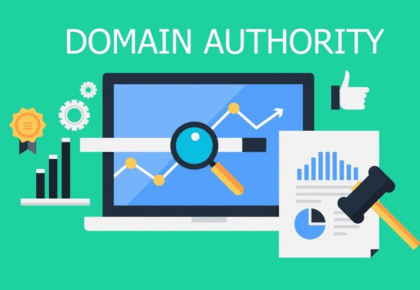In today’s fiercely competitive digital landscape, businesses cannot afford to approach marketing without a well-defined plan. Digital marketing strategy services serve as a critical compass, helping brands navigate channels, audiences, and tactics to maximize results. From setting clear goals to deploying tailored campaigns, these services ensure your marketing efforts aren’t just active—but effective. Let’s dive into the building blocks of crafting a comprehensive digital marketing roadmap for growth.
image source: pexels.com
Understanding Your Audience and Market
Every solid strategy starts with knowing who you’re talking to and what they care about. This involves building detailed buyer personas that include demographics, pain points, motivations, and preferred digital platforms. For example, an e-commerce brand targeting Gen Z might focus on TikTok trends, while a B2B software company could prioritize LinkedIn and industry webinars.
To execute this step, begin by gathering data from sources like Google Analytics, CRM systems, and customer surveys. Identify patterns: which pages users visit, where they drop off, and what content resonates. Tools like SEMrush or Ahrefs can also help analyze competitors’ audiences, revealing gaps or opportunities in the market.
Finally, document your personas and keep them accessible. They’ll become the reference point for messaging, content creation, and channel selection, ensuring your entire team is aligned around whom you’re trying to reach.
Setting Measurable Goals and KPIs
Without goals, a digital marketing strategy lacks direction. Setting SMART goals—Specific, Measurable, Achievable, Relevant, and Time-bound—lays the groundwork for success. For instance, a goal could be: “Increase website traffic from organic search by 30% within six months.”
To implement this, define both macro and micro goals. Macro goals might include revenue growth or brand awareness, while micro goals could be email open rates or cost-per-click targets. Use tools like Google Analytics or HubSpot to establish benchmarks and set up tracking dashboards.
Regularly review performance against your KPIs. If progress stalls, adjust your tactics—perhaps revising ad creative, updating SEO keywords, or tweaking audience targeting. Goals should be ambitious yet flexible enough to evolve alongside market conditions.
Crafting a Multi-Channel Approach
Modern consumers interact with brands across numerous touchpoints—social media, search engines, email, and more. A multi-channel strategy ensures your message reaches audiences wherever they are. For example, a fashion brand might blend Instagram influencer partnerships with SEO-optimized blog content and retargeting ads.
Begin by identifying the channels your personas use most. Develop channel-specific strategies—for social media, plan content calendars; for email, segment lists and personalize messages. Consistency is key: your brand voice and visual identity should remain uniform across all platforms.
Integrate channels so they work together rather than in silos. For instance, a blog post can feed into an email newsletter, which then links to a social media campaign. This interconnectedness amplifies your reach and nurtures customers through their journey.
Developing Content That Connects
Content is the fuel that powers digital marketing. However, content creation must be purposeful, aligning with audience interests and search intent. A B2B SaaS company, for instance, might produce detailed whitepapers, while a lifestyle brand could focus on engaging videos and blog posts.
Start with keyword research to uncover what topics your audience searches for. Create a content calendar mapping topics to buyer journey stages—awareness, consideration, decision. Use diverse formats: blog posts, videos, infographics, podcasts, depending on what resonates with your audience.
Optimize content not only for SEO but also for conversions. Include strong calls-to-action, internal links, and clear next steps for users. Measure content performance and update underperforming pieces, ensuring your library stays relevant and competitive.
Leveraging Data and Analytics
Data transforms a strategy from guesswork into a precise science. Analytics tools reveal what’s working, what’s not, and where you should invest resources. For example, if analytics show low conversion rates from a particular landing page, you might redesign it for clarity and stronger CTAs.
To execute, ensure proper tracking is set up—this includes Google Analytics, Facebook Pixel, and CRM integrations. Regularly review metrics like bounce rates, cost per acquisition, and ROI for paid campaigns. Create dashboards to visualize key data points, simplifying reporting for stakeholders.
Data should drive decision-making. Avoid vanity metrics and focus on actionable insights. For instance, a high email open rate is good, but if click-throughs are low, it signals your content isn’t compelling enough to drive deeper engagement.
Optimizing for SEO and Paid Search
Organic and paid search remain cornerstones of visibility. SEO service ensures your website ranks for critical keywords, while paid search delivers immediate traffic. For example, an online furniture retailer might target “modern office desks” organically and run PPC campaigns for seasonal promotions.
Start SEO with a comprehensive audit, identifying technical issues, keyword gaps, and content opportunities. Implement on-page optimizations like meta tags, internal linking, and schema markup. For paid search, research keywords, craft compelling ad copy, and set clear budgets.
Continual testing is crucial. For SEO, monitor rankings and adjust content as algorithms evolve. For PPC, A/B test ad creatives, refine bidding strategies, and analyze which keywords bring the best ROI. A combined approach ensures sustainable growth and immediate visibility.
Maintaining Agility and Continuous Improvement
The digital marketing landscape is dynamic; new platforms emerge, and audience behaviors shift. Staying agile means regularly evaluating strategies and pivoting quickly. For example, brands that adopted short-form video early on TikTok gained significant traction over slower competitors.
Establish a routine for quarterly strategy reviews. Assess performance data, industry trends, and competitor activities. Solicit feedback from your sales or customer service teams, as they often have insights into changing customer sentiments.
Finally, foster a culture of learning and experimentation. Encourage your team to test new tactics—perhaps a new social media feature or AI-driven personalization tool. Even small experiments can yield big insights, keeping your strategy ahead of the curve.
Implementing a comprehensive roadmap requires expertise, planning, and ongoing effort. Partnering with digital marketing strategy services can provide the guidance, tools, and talent necessary to transform scattered activities into a unified path toward growth and measurable success.




